
During the growing season, cucumbers occasionally develop brown leaves. However, if the brown discoloration occurs more frequently, it is important to react quickly and investigate the causes. This is what you should do when cucumber leaves turn brown.
In a nutshell
- ensure adequate water supply
- Avoid heat stroke in young plants
- ensure nutrient supply
- ensure optimal humidity
- regularly check for pests
Table of contents
- Pour right
- Avoid heat stroke
- fix nutrient deficiencies
- Regulate humidity in the greenhouse
- prevent diseases
- frequently asked Questions
Pour right
While cucumbers like lots of water, both too much and too little water can be detrimental to the plants. On average, a cucumber plant needs 1.5 to 3 liters of water a day. Improper watering can cause the plants to start shedding leaves. How to properly water cucumbers:
- Always keep the soil slightly moist
- preferably water in the morning
- If possible, do not wet the leaves
- use tempered water
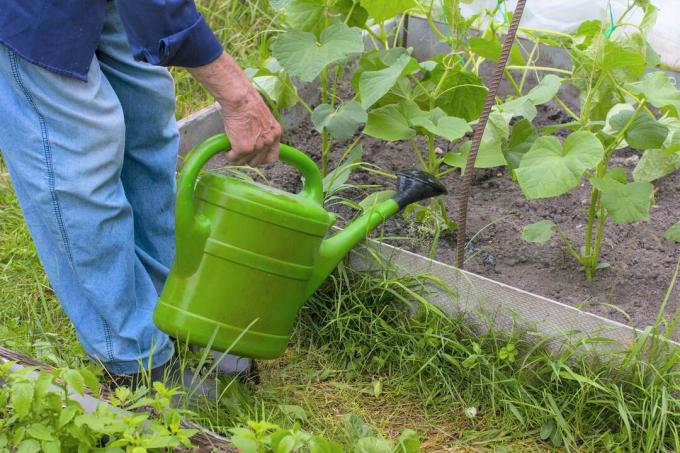
A common watering mistake that can lead to brown cucumber leaves is using water that is too cold. The cucumber plant can suffer a cold shock. The plant can absorb less water through the roots, which means that the leaves are no longer properly supplied and eventually die.
Avoid heat stroke
A heat stroke can especially overtake young plants that planted in the greenhouse become. The delicate plants are not used to the high temperatures that prevail there and react by turning their leaves brown. How to prevent heat damage:
- Slowly get the young plants used to the temperatures
- Shade the greenhouse during the midday heat
- water several times throughout the day
- Leave the greenhouse door open on hot days
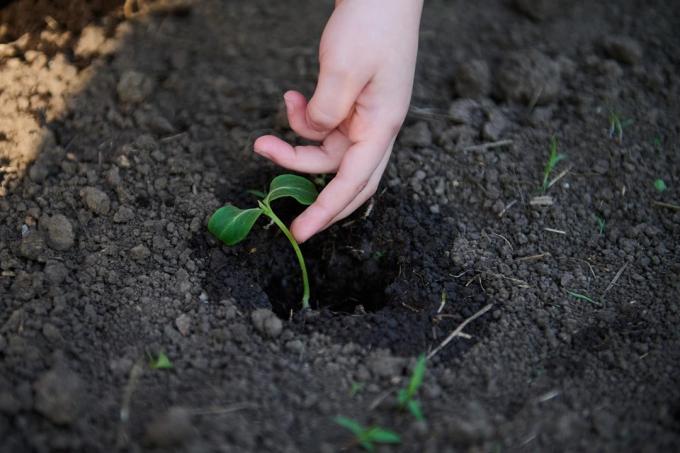
A notice: Young plants in the field quickly get sunburned, as they are not used to direct sun. First place the plants in the shade and slowly acclimate them to the sun. This way you can prevent the cucumber leaves from turning brown.
fix nutrient deficiencies
While it takes a long time for cucumbers to sustain lasting damage from nutrient deficiencies, it can be a problem for heavy-bearing plants. The symptoms are initially rather inconspicuous, so the leaves become lighter and lighter. The nutrients not only form the basis for growth, the plant also needs them to form the green color in the leaves. If this is missing, there is none photosynthesis more possible, which means that more and more cucumber leaves turn brown and the plant ultimately dies. How to ensure the nutrient supply of the cucumber plants:
- Basic fertilization with compost or manure before planting
- Long-term fertilizer like horn shavings use
- from fruit formation every two weeks liquid fertilizer such as nettle manure administer
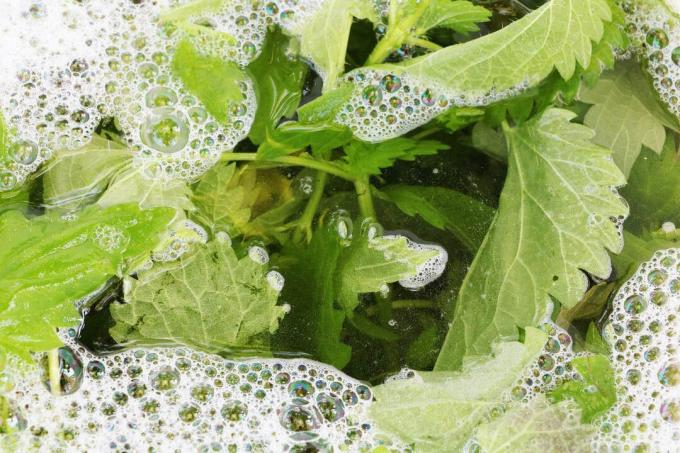
Regulate humidity in the greenhouse
Similar to watering can humidity in the greenhouse have a significant impact on plant health. If the humidity is not right, diseases and pests can also cause the cucumber leaves to turn brown.
Is the air too dry?, like to settle down Spider mites on cucumbers at. They are not immediately recognizable, as they mainly cavort on the underside of the leaf and form fine webs there. They suck on the leaves, which causes them to turn brown. You should combat spider mites as follows:
- increase humidity
- shower plants
- Pack potted plants in foil bags
- Cut back infested plant parts (in advanced infestation)
- Spread predatory mites (in case of acute infestation)
A notice: As soon as the humidity is increased, the insects will disappear on their own. Other insecticides are usually not necessary.
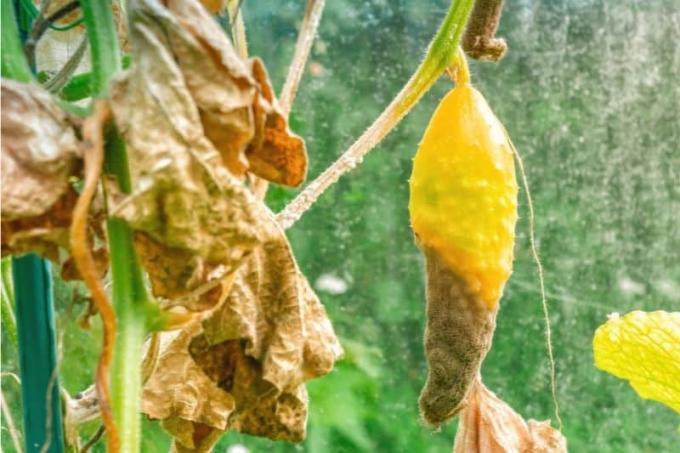
Is the humidity too high?, this can lead to sclerotinia wilt. This affects the stems of the leaves and can be recognized by a white coating. The fungus interrupts the flow of sap, causing the leaf to turn brown and die. The infection can hardly be fought, which is why optimal humidity is the best prevention.
prevent diseases
Unfortunately, cucumbers – like all cucurbits - proportionate prone to disease all kinds. Especially fungal infections like the dreaded one cucumber mosaic virus lead to crop failures. In the first stage, mosaic-like yellow spots appear on the cucumber leaves before they turn completely brown and wither. Deformations also occur on the fruit. Combat is not possible. Therefore, dispose of infested plants completely in the household waste and thoroughly clean the cutting tools used. With these tips you can prevent viral diseases on cucumber plants:
- Change location regularly
- use resistant seeds
- change the substrate when cultivating in the bucket
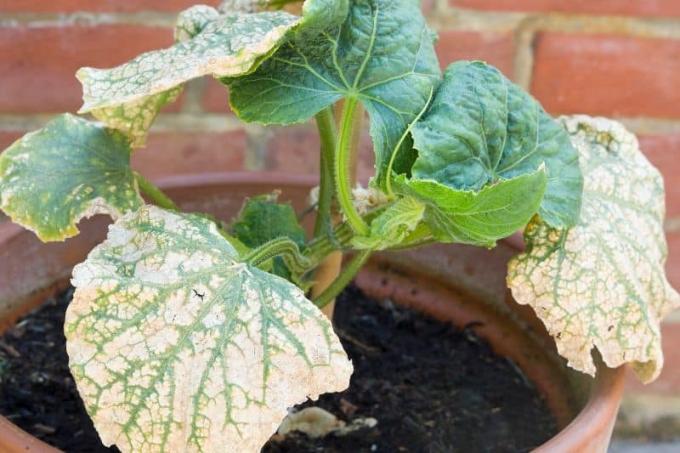
A notice: The cucumber mosaic virus mainly affects outdoor cucumbers. A temperature range of 20 to 25 °C is particularly risky.
frequently asked Questions
You should not cut off healthy and vital cucumber leaves. The cut surface offers pathogens an easy entry point. With healthy and robust plants, it can make sense to remove the bottom leaves. How to keep soil viruses and fungi at bay. Has a leaf already turned brown or is about to die off, you can cut it off.
Cucumber leaves are edible. Especially the leaves of young shoots or Whole shoots are often overcooked in Asian cultures. Older leaves are theoretically edible, but the mouthfeel is usually rather unpleasant.
Especially in small areas, the possibility of regularly changing the location is limited. This can promote various diseases that turn the cucumber leaves brown. It is therefore advisable to change the location every year and to plant the cucumber at the same location every three to four years at most.
